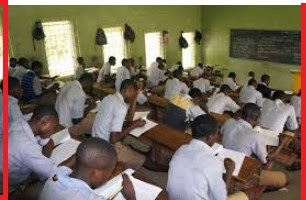WAEC 2018 ECONOMICS QUESTIONS AND ANSWERS: THEORY & OBJECTIVES – Related with these are; WAEC Economics past questions 2017. WAEC Economics past questions,2015, GCE past questions on English language, WAEC Biology question and answer 2018, marking scheme for WAEC physics practical, and area of concentration for WAEC 2018. These are essential to your making good grades in this 2018 May/June WAEC examinations to qualify you for university admission this year WAEC 2018 Economics Questions And Answers: Theory & Objectives.
In this post are verified regularly repeated Economics Objective and Essay questions and answers for 2018 May/June SSCE exam that holds on 17/4/2018. Get them in your finger tips and you are sure of a high grade in this exams. WAEC 2018 Economics Questions And Answers: Theory & Objectives.
WAEC 2018 ECONOMICS QUESTIONS AND ANSWERS: THEORY & OBJECTIVES
Table of Contents
WAEC BRIEFS
The West African Examinations Council (WAEC) is the West African countries Examination Body. It conducts the West African Senior School Certificate Examination for in-house school students and General Certificate Examination for private candidates in West African Countries. These are entry qualification examinations for higher education institutions in these countries.
As you know, no University, Polytechnic, or college of education in these countries would admit you into any of their courses without a good grade in any of these examinations. That is why over three million candidates register and take these subject exams annually.
Consequently, WAEC 2018 English Questions & Answers: Objective, Essay, & Oral Test, our goal here is to help you achieve this your life dream. Listed here are Economics, Objective and Essay questions and answers relevant to 17/4/2018 Economics Subject examination.
WAEC 2018 ECONOMICS QUESTIONS AND ANSWERS: THEORY & OBJECTIVES
THE EXAM PROCEDURES
There are two papers here– Paper 1 and Paper 2; both of which will be combined as a 3 hour composite paper.
Paper 1: Here you have fifty multiple choice questions to be taken in 1 hour for 50 marks.
Paper 2: Here too are eight essay- type questions in two sections: Sections A and B.
Section A shall be on data response. Candidates will be required to answer four questions in all, choosing one question from Section A and any three questions from Section B. The paper is for 2 hours and for 80 marks.
OBJECTIVE
1. One of the advantages of large scale production is that
A. there is a rise in the cost of administration.
B. consumers sacrifice their individual tastes.
C. the firm can use labour-saving machinery.
D. the demand for a firm’s products becomes localized.
2. The location of timber and plywood industries in West Africa is mainly influenced by the availability of
A. transport.
B. water.
C. raw materials.
D. labour supply.
3. Malthus’ population theory states that
A. high death rate may lead to low productivity.
B. population may outgrow the means of subsistence.
C. people will always decide to have children.
D. migration may leave some parts of the world barren.
4. Which of the following is not likely to be an effect of a growing population?
A. Rise in demand
B. Unemployment
C. Fall in standard of living
D. High per capita income
5. Personal savings are generally low in West Africa because of
A. the level of income of the people.
B. the refusal of banks to grant loans.
C. overpopulation.
D. cheaper foreign currencies.
WAEC Economics Questions 2017 [Theory and Objective] | Check Economics Random Repeated Questions Here.
6. Devaluation of currency in a country is likely to lead to
A. increasing population.
B. increasing imports.
C. exports becoming cheaper.
D. reduced exports.
7. Which of the following is not a benefit derived from the petroleum industry?
A. Increased foreign exchange earnings
B. Establishment of refineries and petrochemical industries
C. Employment of a greater proportion of the population
D. Development of airports, seaports and other social infrastructure
8. An efficient weapon used in resolving disputes between employees is
A. co-operation.
B. collective bargaining.
C. display of placards.
D. legal action.
9. A country’s balance of payment is in deficit when
A. a country’s payments for imports of invisible goods are greater than her receipts from exports of invisible goods.
B. the total receipts from her export of visible and invisible goods are greater than her payments for visible and invisible imports.
C. it can record a surplus on current account of her balance of payments accounts.
D. the total payments for visible and invisible imports are greater than the total receipts from her exports of visible and invisible goods.
10. Which of the following features best describes peasant agriculture in West Africa? It
A. specializes in the production of one crop.
B. involves the use of small farm holdings.
C. is a capital-intensive system of farming.
D. is mostly associated with tree crops
3. The market for a good was in equilibrium. A change occurred which resulted in a new equilibrium with a higher price for the good and a lower quantity traded.
What change would have caused this?
A the demand curve moved to the left
B the demand curve moved to the right
C the supply curve moved to the left
D the supply curve moved to the right.
4. A demand curve shows the relationship between the quantity demanded and
A a change in income
B consumer tastes
C the supply of the product
D the price of the product.
5. A government subsidises the production of pineapples.
This is likely to
A increase the price of pineapples
B raise the costs of supplying pineapples
C raise revenue for the government
D cause the supply of pineapples to increase at every price.
6. What indicates the existence of external costs in an economy?
A An international trade deficit has caused the country to be in debt.
B National companies have borrowed from foreign investors.
C Private costs of production are less than social costs.
D Private costs of production are more than social benefits.
7. What might be a disadvantage to a trade union when arguing for an increase in its members’ pay?
A an increase in imports of a cheaper, similar product
B the closure of a local training college resulting in fewer potential workers
C the development of a new and profitable brand of the company’s product
D the development of new techniques that increase productivity.
8. A Japanese car manufacturer decided to produce its cars in a factory in Europe.
What would not be a reason why they might have chosen to do this?
A cheaper wage costs in Europe
B the availability of raw materials
C to gain external economies from skilled labour in Europe
D to increase Japanese self-sufficiency.
9. A government removed the quota on goods imported into the country.
What is the most likely result of this?
A a decrease in demand for domestic production
B a decrease in domestic unemployment
C a decrease in exports
D a decrease in the balance of trade deficit.

WAEC 2018 ECONOMICS QUESTIONS AND ANSWERS: THEORY & OBJECTIVES
THEORY (ESSAY)
1. (a) Distinguish between economic activities and an economic system.
(b) Explain the following terms:
(i) Production;
(ii) Distribution;
(iii) Consumption.
2. (a) With the aid of a diagram, explain a minimum price.
(b) State any five measures by which a minimum price for an agricultural produce can be made effective.
3 (a) Describe the output method of measuring the gross domestic product of a country.
(b) How is the net national product at factor cost obtained from gross domestic product?
(c) State two problems associated with the output method.
4. (a) Explain the function of money as a
(i) measure of value;
(ii) store of value.
(b) Show how inflation affects these two functions of money.
5. (a) What is a commercial bank?
(b) Describe any four ways by which the Central Bank controls the amount of Credit given by the commercial banks.
6. (a) Differentiate between human capital and physical capital.
(b) State three ways of improving on the stock of human capital in your country.
More Requirements
If you desire further assistance, or have questions to ask, send them through the comment box on this page. Remember to share this through our social media share buttons below this page.
If you click to follow us on our Facebook handles you will ensure a regular update on matters that affect your performance on this.
Good luck.
WAEC 2018 ECONOMICS QUESTIONS AND ANSWERS: THEORY & OBJECTIVES

Deacon Anekperechi Nworgu, a seasoned economist who transitioned into a chartered accountant, auditor, tax practitioner, and business consultant, brings with him a wealth of industry expertise spanning over 37 years.



